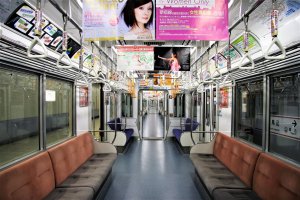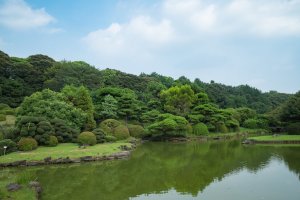Overview
Along with its JR and Tokyo Metro lines, the Toei Subway Line is Tokyo's major rail transportation network. Run by the Tokyo Metropolitan Government, the network features four different subway lines, represented by four different colours and carries close to three million passengers each day. Just over one hundred stations can found on these lines, making the Toei Subway Line one of Tokyo's most convenient ways of accessing some of the capital's most interesting and diverse range of sights and places of interest.
Toei Asakusa Line
Established in 1960, the Toei Asakusa Line is home to twenty stations. Its pink line stretches from Nishi-magome in the south to Oshiage in the north-east. The Toei Asakusa line is the only line that can allow a passenger to travel between Narita and Haneda airports without having to change trains. The line also provides access to some fascinating historical and cultural sites such a Hatakeyama Museum of Fine Art and Kabukiz-sa, home of kabuki, a UNESCO recognised traditional theatre art.

Toei Mita Line
Opening in 1968, the Toei Mita Line features twenty-seven stations starting with Meguro in Tokyo's south-west and running through central Tokyo to end at Nishi-takashimadaira in the north-west. The blue line is one of Tokyo's ten busiest subway lines, was the first to have safety barriers at its stations and offers access to beautiful spaces like Koishikawa Botanical Garden, modern technology like the TeNQ Space Museum and local art galleries like the Itabashi Art Museum.

Toei Shinjuku Line
Having opened in 1978, the Toei Shinjuku Line runs from Shinjuku in central Tokyo all the way into Chiba Prefecture to end at Motoyawata. The third busiest of Tokyo's subway lines, the leaf green Toei Shinjuku Line features twenty-one stations and cuts straight across central Tokyo, providing straightforward access to not only the heavy sights of Shinjuku but many local and generally off the radar places like the Matsuo Basho Memorial Hall, the Ichigaya Fishing Center and the Ichinoe Nanushi Yashiki Edo era farmhouse.

Toei Oedo Line
The only subway line to be completely underground, the Toei Oedo Line opened in 1991 and features an extraordinary thirty-eight stations, the most of any in Tokyo. The magenta line starts at Shinjuku-nishiguchi, loops through central Tokyo before heading back past its origin to end at Hikarigaoka in the north-west. Famous sites like the Sumida Hokusai Museum and the Meiji Memorial Picture Gallery can be found along with more obscure sites like the ancient royal tomb of Shiba Maruyama Kofun.





























But while that's deep by Tokyo standards, it's far from the deepest I have been. Moscow and St. Petersburg indeed have some stations that are over twice as deep, and some of the stations at the Pyongyang subway are over 100 meters below street level (and double as a bomb shelter). As a result, the ride on the escalaters down and up again might take more time than the average subway ride: https://www.youtube.com/watch?v=I6u-C3XLVvw